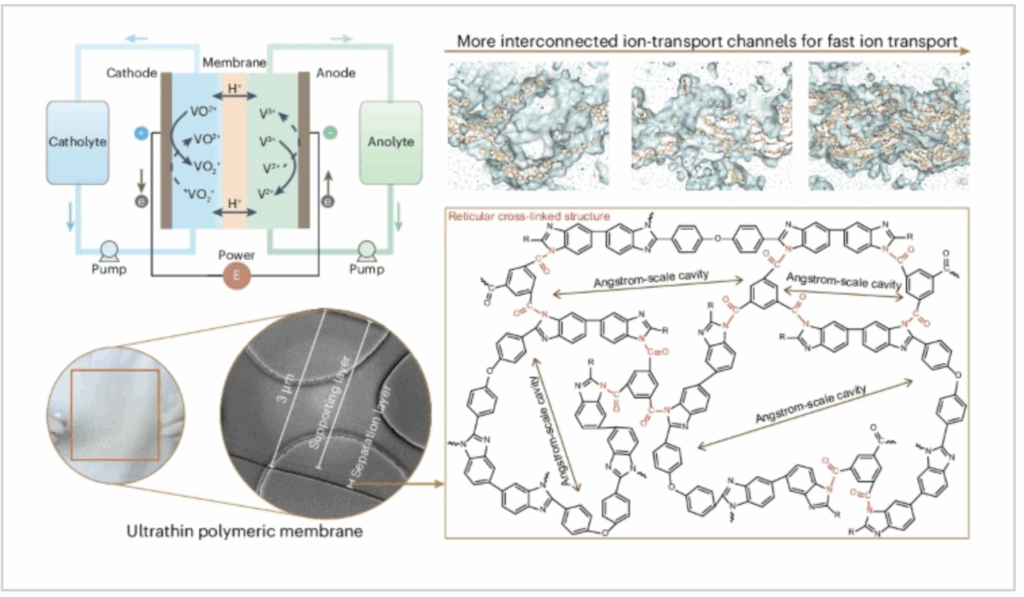http://english.cas.cn/newsroom/research_news/chem/202506/t20250623_1045951.shtml
https://www.nature.com/articles/s44286-025-00238-2
A research team led by Prof. LI Xianfeng from the CAS Dalian Institute of Chemical Physics developed a novel interfacial polymer cross-linking strategy to fabricate ultra-thin polymeric membranes with nanoscale separation layers. The researchers confined polymer cross-linking reactions within a limited interfacial space, and then induced polymer film solidification through solvent-nonsolvent exchange. This led to a nanoscale cross-linked separation layer on top of a polymeric supporting layer.
The stable, covalently cross-linked structure enabled the overall membrane thickness to be reduced to just 3 μm. By varying the cross-linking time and types of agents, researchers could tune the thickness and morphology of the separation layer. The cavities between the polymer chains ranged from 1.8 to 5.4 Å in size—forming a quasi-ordered reticular structure that allows for precise, angstrom-scale ion sieving.
This structure achieved high ion selectivity and low resistance, effectively overcoming the traditional selectivity and permeability trade-off. The membrane’s high size-sieving capability and low-transport resistance results in a vanadium flow battery with an energy efficiency of 82.38% at 300 mA/cm2.


